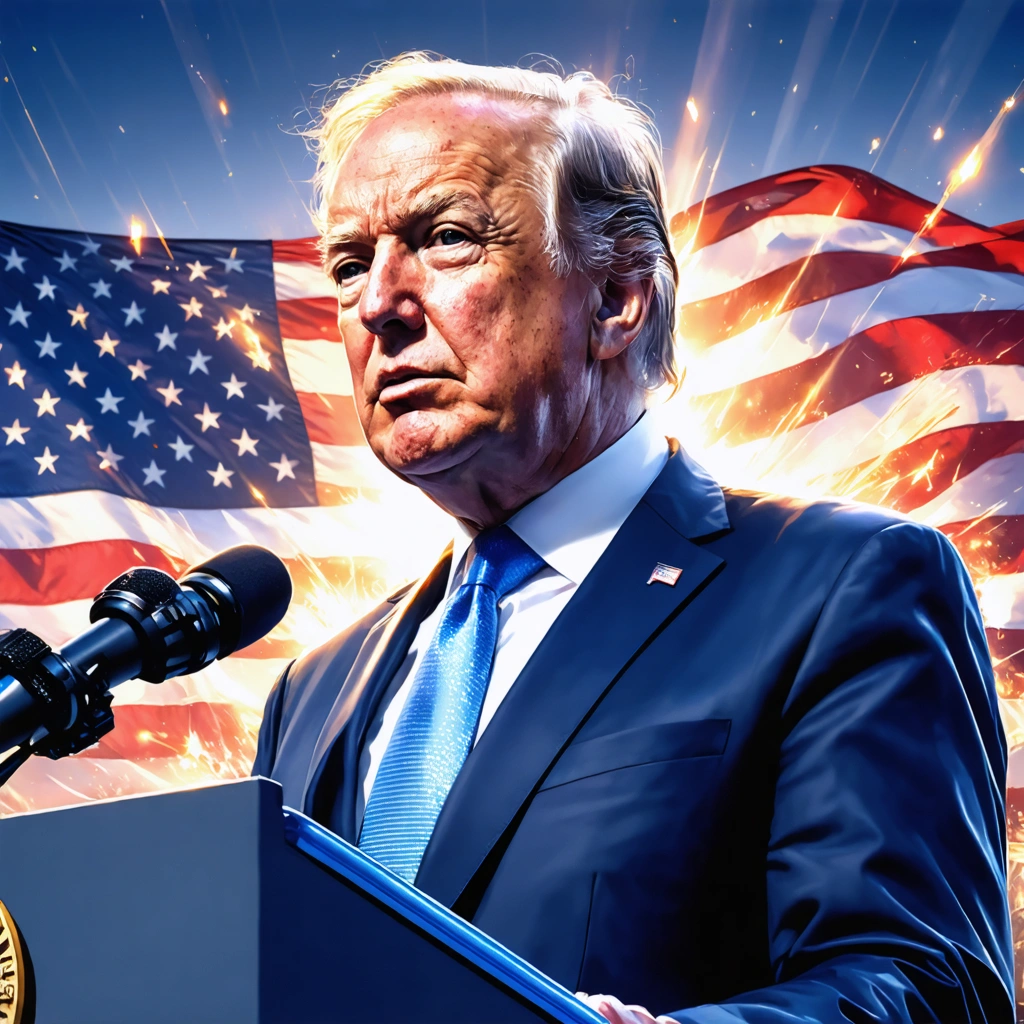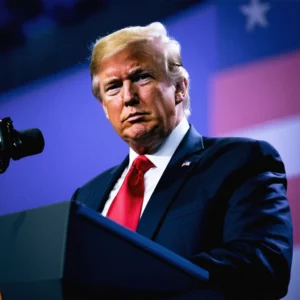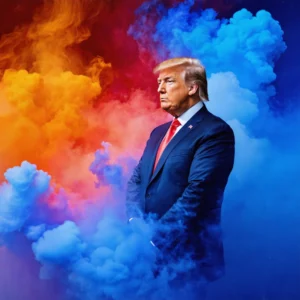
Introduction: Navigating Uncertainty in U.S. Policy and Business
The current political and economic landscape in the United States has been marked by sudden shifts, unexpected policy reversals, and emerging threats that extend across various sectors. Notably, Senator Chuck Schumer’s recent about-face on the stopgap spending bill has sent ripples through political corridors and financial markets, prompting analyses from business leaders and policy analysts alike. This article examines Schumer’s policy reversal, assesses subsequent responses, and explores how other intertwined factors—such as a threat from former President Trump to law firms, a potential surge in tuberculosis (TB) risk, and the peril faced by theaters—are contributing to an atmosphere of flux and uncertainty.
Schumer and the Shutdown About-Face
Political Background and the Reversal Explained
Senator Chuck Schumer, a leading figure in Democratic leadership, recently reversed his stance on the stopgap spending bill—a critical legislative proposal intended to avert a government shutdown. This reversal ignited a wave of deliberations across the political spectrum regarding fiscal policy, accountability, and short-term crisis management in government spending. Schumer’s decision, while aimed at ensuring continuity in government operations, has raised concerns on both ideological and practical grounds.
- Initial Position: Originally, Schumer’s support for the stopgap bill was presented as a means to secure essential government services and prevent economic disruption.
- Reversal Impact: The about-face has not only unsettled political allies and opponents alike, but also highlighted underlying disagreements in budget priorities and fiscal strategy.
- Broader Reactions: This decision has prompted statements from cabinet officials, budget experts, and even business communities anxious about the stability of government spending.
Senate Dynamics and Strategic Considerations
The implications of Schumer’s policy shift have also come under scrutiny in the context of Senate dynamics. On one hand, his decision is viewed as a tactical maneuver aimed at consolidating broader legislative support and addressing unforeseen fiscal pressures. On the other, the dramatic reversal has introduced questions regarding long-term budget planning and the risk of cascading delays in other legislative areas. Key aspects include:
- Legislative Negotiations: The reversal necessitates a recalibration of negotiating stances among various senators, particularly those from swing regions with a nuanced view on fiscal conservatism.
- Short-term vs. Long-term Policy: The short-term benefits of averting a shutdown are balanced against potential long-term challenges in establishing a reliable fiscal framework.
- Market Implications: Investors and market analysts are monitoring the political signals closely, given that abrupt policy changes can lead to uncertainty in market forecasts and business planning.
Extended Business and Social Ramifications
Trump’s Threat to Law Firms: A Calculated Pressure Tactic
Parallel to Schumer’s reversal, recent developments have brought to light a controversial threat by former President Trump directed at law firms. This situation, though seemingly separate, interweaves with political and economic uncertainties in several ways:
- Political pressure campaigns have often utilized legal threats to sway public opinion and pressure negotiation processes.
- The threat represents a potential strategic tool aimed at influencing law firms’ stances or actions in politically sensitive cases.
- The business community acknowledges that such threats can have far-reaching consequences on how firms manage risk and client relationships.
For law firms, navigating this ambiguous threat requires not only legal preparedness but also a robust risk management strategy that considers both public relations and long-term operational stability. The situation calls for the following strategic responses:
- Enhanced Legal Prudence: Firms are advised to reassess their compliance protocols and maintain clear lines of communication with regulatory bodies.
- Risk Management: Establishing dedicated crisis management teams to address potential fallout.
- Stakeholder Engagement: Proactive dialogue with clients, regulators, and industry bodies to mitigate adverse impacts.
Heightened TB Risk and Theaters in Peril: Broader Socio-Economic Concerns
Alongside these political-economic challenges, concerns extend into public health and cultural sectors. Recent reports indicate a rising risk of tuberculosis (TB) due to factors such as declining public health funding and shifts in demographic trends. The resurgence of TB poses direct threats to workforce productivity and poses challenges for public health infrastructure. Key risk indicators include:
| Indicator | Current Trend | Potential Impact |
|---|---|---|
| Public Health Funding | Decreasing | Worsening TB detection and treatment |
| Workforce Health | Vulnerable | Impact on productivity and economic output |
| Screening and Surveillance | Inconsistent | Delayed interventions and increased transmission |
Simultaneously, the cultural sector, particularly theaters, is experiencing mounting pressure amid economic constraints. Once considered thriving centers for artistic expression and community engagement, many theaters now face existential threats due to reduced funding, declining attendance, and emerging competition from digital platforms. Consider the following challenges:
- Financial Instability: Many theaters rely on a combination of public funding, private donations, and ticket sales. Current economic headwinds have disrupted these revenue streams.
- Cultural Shifts: The rapid digital transformation has introduced new modes of content consumption that are challenging traditional theatrical models.
- Policy-Driven Changes: Reduced government support and shifting legislative priorities place additional strain on these cultural institutions.
In summary, the confluence of Schumer’s legislative reversal, Trump’s contentious threats, the looming TB risk, and the fading vibrancy of theater industries demonstrates a complex web of intersecting challenges. These developments collectively require forward-thinking strategies from governmental bodies, corporate sectors, and cultural administrators alike.
Integrated Strategic Outlook for Stakeholders
Recommendations and Actionable Insights
In view of these multifaceted challenges, business leaders, policy makers, and cultural organizations are urged to adopt an integrated approach to risk management and strategic planning. The following recommendations serve as a blueprint:
- For Policy Makers:
- Emphasize transparent communication to manage uncertainty surrounding fiscal decisions.
- Establish contingency plans to address potential shutdowns while planning long-term fiscal strategies.
- Engage in bipartisan dialogues to neutralize abrupt policy reversals and ensure continuous legislative support.
- For Business Leaders:
- Monitor political developments closely and incorporate adaptive strategies into financial planning.
- Invest in risk management practices tailored to potential legal challenges and public health crises.
- Strengthen stakeholder relations through proactive communication and diversified risk mitigation measures.
- For Cultural and Social Institutions:
- Develop innovative revenue models that blend traditional audience engagement with digital experiences.
- Lobby for increased public funding and support to safeguard public access to arts and culture.
- Implement crisis management frameworks to navigate economic downturns and demographic shifts.
Conclusion: Embracing a Future of Complexity and Opportunity
While the confluence of these issues paints a challenging picture, the complex landscape also presents unique opportunities. Stakeholders who adopt collaborative approaches, invest in robust risk management, and remain agile in the face of policy reversals will be better positioned to navigate uncertainty. Ultimately, embracing transparency, strategic foresight, and interdisciplinary cooperation can transform these disruptive forces into catalysts for innovation and resilience in fiscal, legal, and cultural sectors.




